-
 Bitcoin
Bitcoin $114800
-3.31% -
 Ethereum
Ethereum $3641
-5.84% -
 XRP
XRP $2.948
-6.36% -
 Tether USDt
Tether USDt $0.9998
-0.03% -
 BNB
BNB $772.4
-3.97% -
 Solana
Solana $169.1
-6.68% -
 USDC
USDC $0.9999
-0.01% -
 Dogecoin
Dogecoin $0.2056
-8.09% -
 TRON
TRON $0.3247
-0.18% -
 Cardano
Cardano $0.7239
-7.43% -
 Hyperliquid
Hyperliquid $39.71
-8.60% -
 Stellar
Stellar $0.3912
-7.84% -
 Sui
Sui $3.510
-10.17% -
 Chainlink
Chainlink $16.59
-8.03% -
 Bitcoin Cash
Bitcoin Cash $560.5
-3.65% -
 Hedera
Hedera $0.2464
-10.08% -
 Avalanche
Avalanche $22.03
-7.87% -
 Ethena USDe
Ethena USDe $1.001
-0.02% -
 UNUS SED LEO
UNUS SED LEO $8.947
0.21% -
 Toncoin
Toncoin $3.389
-2.58% -
 Litecoin
Litecoin $104.9
-5.23% -
 Shiba Inu
Shiba Inu $0.00001220
-6.67% -
 Polkadot
Polkadot $3.652
-6.10% -
 Uniswap
Uniswap $9.213
-9.05% -
 Monero
Monero $307.2
-2.93% -
 Dai
Dai $0.9998
-0.02% -
 Bitget Token
Bitget Token $4.367
-2.89% -
 Cronos
Cronos $0.1374
-6.80% -
 Pepe
Pepe $0.00001056
-8.65% -
 Aave
Aave $257.3
-7.31%
What does SAR stand for in Parabolic SAR?
The Parabolic SAR, meaning "Stop and Reverse," is a crypto trading tool that helps identify trend reversals through dots above or below price candles.
Jul 31, 2025 at 06:49 pm
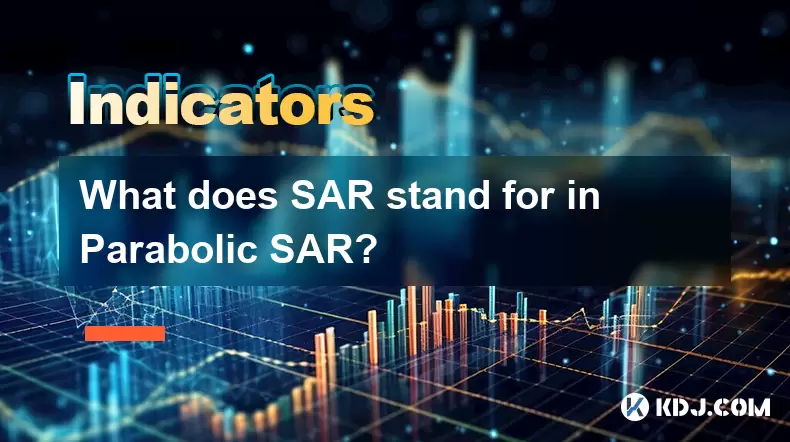
Understanding the Meaning of SAR in Parabolic SAR
In the context of technical analysis in the cryptocurrency market, SAR stands for "Stop and Reverse" within the Parabolic SAR indicator. This term is not an acronym related to signal strength, radar, or medical imaging, as it might be in other fields. Instead, in trading, SAR specifically refers to a mechanism that signals when a trader should exit a current position and reverse direction. The Parabolic SAR is a popular tool used by traders to identify potential reversals in price movement, making it especially useful in trending markets.
The indicator appears as a series of dots placed either above or below the price candles on a chart. When the dot shifts from being below the price to above it, this is interpreted as a bearish reversal signal, suggesting that it may be time to exit a long position and potentially initiate a short one. Conversely, when the dot moves from above the price to below it, this is seen as a bullish reversal signal, indicating a potential shift from a downtrend to an uptrend.
Origin and Development of the Parabolic SAR
The Parabolic SAR was developed by J. Welles Wilder Jr., a renowned technical analyst, and introduced in his 1978 book New Concepts in Technical Trading Systems. Wilder designed this indicator to help traders stay in trending trades for as long as the trend persists and to exit when a reversal is likely. The word "Parabolic" refers to the shape of the indicator’s dots as they accelerate over time, forming a parabolic curve that follows price action more closely as the trend strengthens.
Wilder’s intention was to create a system that automatically adjusted the stop-loss level as the price moved favorably, hence the "Stop and Reverse" component. This means that every time the price hits the SAR level, the system triggers a reversal in position. For example, if a trader is long and the price drops to the SAR value, the system signals to close the long and open a short, assuming the trend has reversed.
How Parabolic SAR Functions in Crypto Trading
In cryptocurrency trading, where volatility is high and trends can emerge and reverse rapidly, the Parabolic SAR serves as a dynamic tool for managing entries and exits. The formula used to calculate the SAR is:
SARn+1 = SARn + AF × (EP – SARn)
Where:
- SARn+1 is the next period’s SAR value
- SARn is the current SAR
- AF is the acceleration factor, starting at 0.02 and increasing by 0.02 each time a new extreme point (EP) is reached, up to a maximum of 0.2
- EP is the highest high in an uptrend or the lowest low in a downtrend
This formula ensures that the SAR dots accelerate toward the price as the trend continues, tightening the stop-loss and reducing the chance of giving back profits. In crypto charts, this can be observed when the dots start close together at the beginning of a trend and then move faster as momentum builds.
Setting Up Parabolic SAR on a Crypto Chart
To apply the Parabolic SAR on a cryptocurrency trading platform such as TradingView, Binance, or CoinGecko, follow these steps:
- Open the chart for the desired cryptocurrency (e.g., BTC/USDT)
- Click on the "Indicators" button, usually located at the top of the chart interface
- Search for "Parabolic SAR" in the indicator library
- Select the indicator to add it to the chart
- Adjust the parameters if needed, such as the initial acceleration factor (0.02) and maximum acceleration factor (0.2)
- Observe how the dots appear relative to the price candles
Most platforms apply the default settings automatically. Traders can customize the color of the dots for better visibility, especially when overlaying multiple indicators. It’s crucial to ensure the SAR is correctly aligned with candlesticks to avoid misinterpretation.
Practical Use Cases in Cryptocurrency Markets
Traders often use the Parabolic SAR in conjunction with other tools like moving averages, Relative Strength Index (RSI), or volume indicators to confirm signals. For instance, during a strong upward trend in Ethereum (ETH), the SAR dots will remain below the price candles. If the price suddenly drops and touches the SAR level, it may signal a reversal.
Another scenario involves range-bound markets, where the Parabolic SAR can generate false signals due to sideways price action. In such cases, the dots may flip above and below the price frequently, leading to whipsaws. To mitigate this, traders may apply filters, such as requiring the closing price to remain beyond the SAR level for two consecutive periods before acting.
Scalpers in the Binance Futures market might use a tighter acceleration factor (e.g., 0.04) to respond faster to short-term reversals, while long-term investors may stick to the default settings to avoid premature exits.
Common Misconceptions About SAR
A frequent misunderstanding is that SAR stands for "Stop Loss and Reentry" or "Signal Alert Response." These are incorrect interpretations. The correct meaning—Stop and Reverse—emphasizes the automatic reversal of position upon hitting the SAR level. It is not merely a stop-loss tool but a full system for switching between long and short positions.
Another misconception is that the Parabolic SAR works equally well in all market conditions. In reality, it performs best in strong trending markets and can be unreliable during consolidation phases. Traders must recognize that no indicator is infallible, and using SAR in isolation increases the risk of losses.
Frequently Asked Questions
Q: Can the Parabolic SAR be used for both long and short positions in crypto futures?
Yes, the Parabolic SAR is inherently designed for both long and short trading. When the dots are below the price, it suggests a long position; when above, it indicates a short. In futures trading on platforms like Bybit or OKX, this makes it ideal for automated reversal strategies.
Q: Does the acceleration factor affect the sensitivity of the SAR in fast-moving crypto markets?
Absolutely. A higher acceleration factor (e.g., 0.04) makes the SAR more sensitive, causing dots to converge faster toward the price. This can be useful in volatile markets like Solana (SOL) or Dogecoin (DOGE), but may increase false signals.
Q: Is the Parabolic SAR suitable for day trading cryptocurrencies?
Yes, especially on 15-minute or 1-hour timeframes. Day traders use it to capture short-term trends. However, combining it with volume analysis or support/resistance levels improves accuracy.
Q: Why do SAR dots sometimes appear inside candle bodies?
This typically happens during price gaps or high volatility, common in crypto. If a candle opens far from the previous close, the SAR may temporarily overlap the body. It does not invalidate the signal but requires careful interpretation.
Disclaimer:info@kdj.com
The information provided is not trading advice. kdj.com does not assume any responsibility for any investments made based on the information provided in this article. Cryptocurrencies are highly volatile and it is highly recommended that you invest with caution after thorough research!
If you believe that the content used on this website infringes your copyright, please contact us immediately (info@kdj.com) and we will delete it promptly.
- Bitcoin, Ethereum, and Investor Behavior: A New York Minute on Crypto Trends
- 2025-08-01 15:10:12
- Tether's Q2 Triumph: USDT Supply Soars Amidst Profit Surge!
- 2025-08-01 15:10:12
- Ethereum ETF Holdings: A Corporate Treasury Revolution?
- 2025-08-01 15:30:12
- Ethereum's Wild Ride: Funding Rates, Price Drops, and Retail to the Rescue!
- 2025-08-01 15:30:12
- Ethereum Under Pressure: Crypto Market Drop Explained
- 2025-08-01 15:35:11
- Ethereum ETF Mania: Inflows Surge, Market Rises, What's Next?
- 2025-08-01 15:35:11
Related knowledge

What is the difference in KDJ signal interpretation between a trending and a ranging market?
Aug 01,2025 at 03:56pm
Understanding the KDJ Indicator in Cryptocurrency TradingThe KDJ indicator is a momentum oscillator widely used in cryptocurrency trading to identify ...

Does the KDJ indicator work well for low-liquidity crypto assets?
Aug 01,2025 at 02:01pm
Understanding the KDJ Indicator in Cryptocurrency TradingThe KDJ indicator is a momentum oscillator derived from the Stochastic Oscillator, widely use...
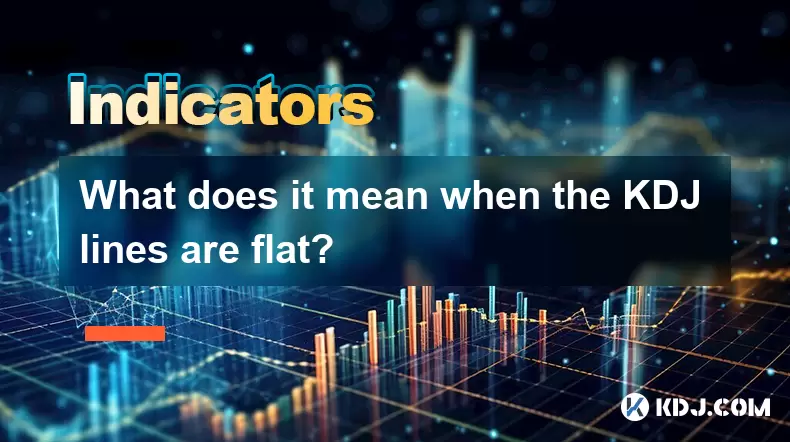
What does it mean when the KDJ lines are flat?
Aug 01,2025 at 03:22pm
Understanding the KDJ Indicator in Cryptocurrency TradingThe KDJ indicator is a momentum oscillator widely used in cryptocurrency technical analysis t...
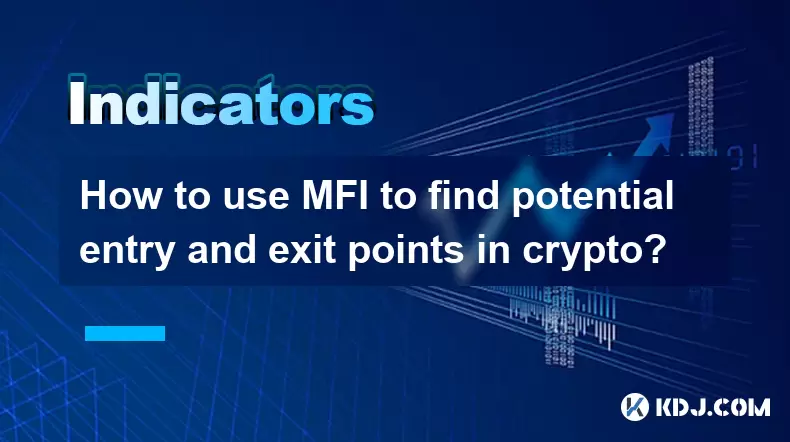
How to use MFI to find potential entry and exit points in crypto?
Aug 01,2025 at 02:35pm
Understanding the MFI Indicator in Cryptocurrency TradingThe Money Flow Index (MFI) is a momentum oscillator used to measure the strength and directio...
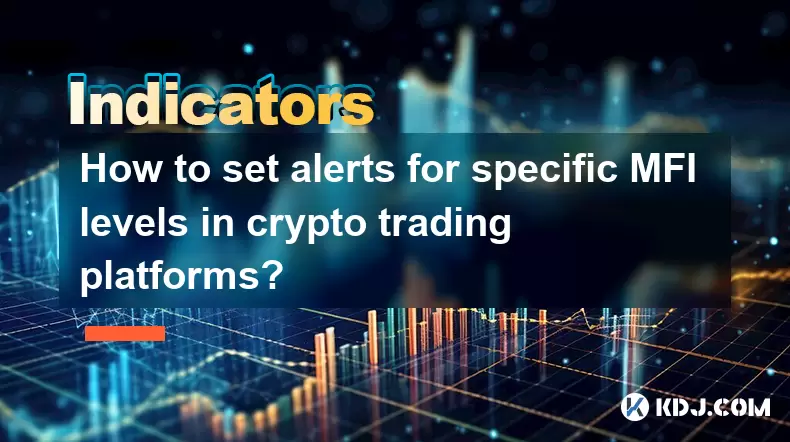
How to set alerts for specific MFI levels in crypto trading platforms?
Aug 01,2025 at 12:42pm
Understanding the Money Flow Index (MFI) in Crypto TradingThe Money Flow Index (MFI) is a momentum oscillator that measures the flow of money into and...
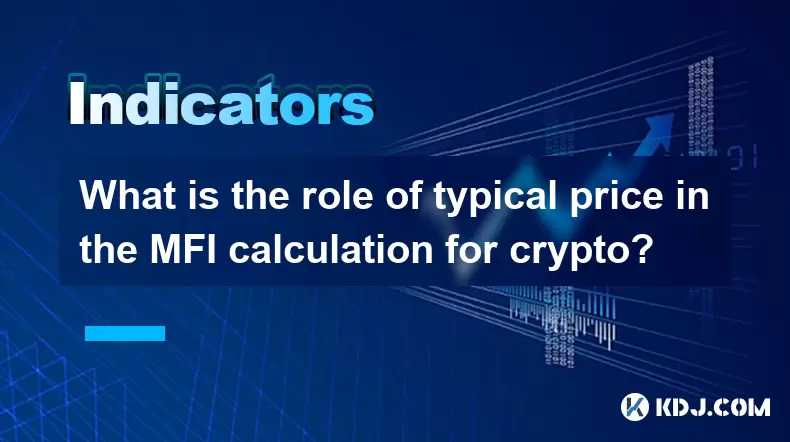
What is the role of typical price in the MFI calculation for crypto?
Aug 01,2025 at 12:21pm
Understanding the Typical Price in MFI for Cryptocurrency AnalysisThe Typical Price plays a crucial role in the calculation of the Money Flow Index (M...

What is the difference in KDJ signal interpretation between a trending and a ranging market?
Aug 01,2025 at 03:56pm
Understanding the KDJ Indicator in Cryptocurrency TradingThe KDJ indicator is a momentum oscillator widely used in cryptocurrency trading to identify ...

Does the KDJ indicator work well for low-liquidity crypto assets?
Aug 01,2025 at 02:01pm
Understanding the KDJ Indicator in Cryptocurrency TradingThe KDJ indicator is a momentum oscillator derived from the Stochastic Oscillator, widely use...

What does it mean when the KDJ lines are flat?
Aug 01,2025 at 03:22pm
Understanding the KDJ Indicator in Cryptocurrency TradingThe KDJ indicator is a momentum oscillator widely used in cryptocurrency technical analysis t...

How to use MFI to find potential entry and exit points in crypto?
Aug 01,2025 at 02:35pm
Understanding the MFI Indicator in Cryptocurrency TradingThe Money Flow Index (MFI) is a momentum oscillator used to measure the strength and directio...

How to set alerts for specific MFI levels in crypto trading platforms?
Aug 01,2025 at 12:42pm
Understanding the Money Flow Index (MFI) in Crypto TradingThe Money Flow Index (MFI) is a momentum oscillator that measures the flow of money into and...

What is the role of typical price in the MFI calculation for crypto?
Aug 01,2025 at 12:21pm
Understanding the Typical Price in MFI for Cryptocurrency AnalysisThe Typical Price plays a crucial role in the calculation of the Money Flow Index (M...
See all articles

























































































